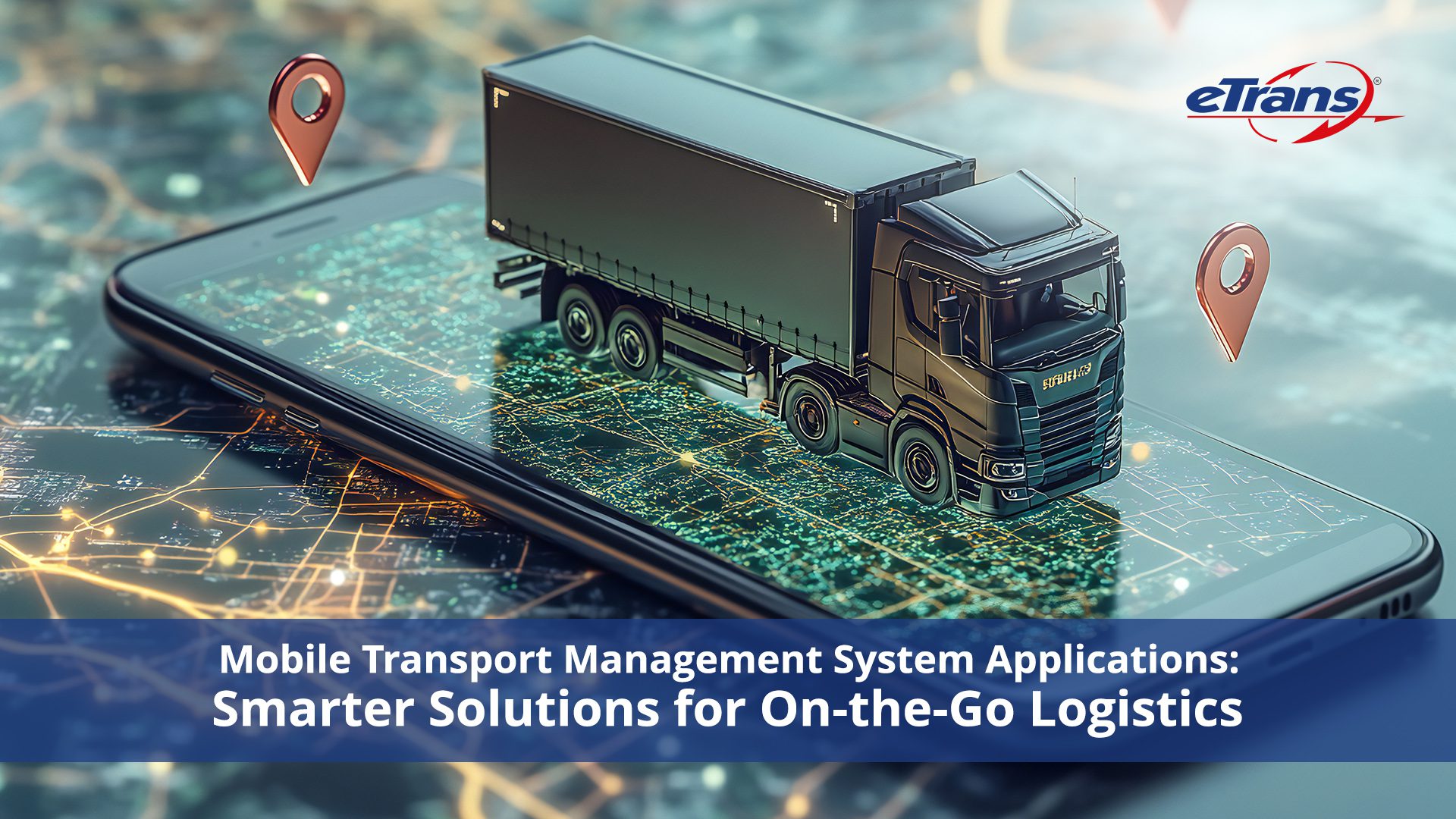Let’s be honest—logistics today moves fast. Trucks don’t stop. Shipments don’t sleep. And customers? Oh, they’re after updates as fast as light in real time. So, how do logistics managers keep up without losing their minds (or their freight)? It’s all now possible due to the mobile transport management system (TMS). For us, it’s not just a fancy dashboard squeezed into a smartphone. It’s a full-blown control centre in your pocket, ready to track, tweak, and tackle issues on the go.
Ignoring mobile TMS applications is like trying to run a relay race in flip-flops. Painful. Missed deliveries, late dispatches, and chaotic route planning are all symptoms of outdated, static logistics operations. But with mobile apps synced to your Transport Management System, your fleet becomes smarter, faster, and far more efficient.
Stick around, and we’ll break down how these tools are transforming logistics management in ways you probably never imagined.
Introduction to Mobile Transport Management System (TMS) Applications
A transport management system used to be a bulky piece of software, tied to a desktop computer in an air-conditioned office. Fast forward to today, and we have mobile TMS applications that fit in your palm, work in real-time, and keep you connected with your fleet wherever you are—even if that’s a coastline in Goa or a stopover in Lucknow.
These mobile apps are designed for on-the-go logistics management and real-time delivery monitoring, allowing dispatchers, drivers, and managers to view live updates, respond to incidents, and tweak routes from their smartphones. It’s the evolution from reactive logistics to proactive driver dispatch solutions that offer real-time decision-making.
The Core Functionalities
• An essential component of any mobile TMS app is real-time logistics tracking. Want to know where Truck #14 is at 2:42 PM? Done. These tools use mobile fleet tracking integrated with GPS to show and pinpoint all location details. The result? Better planning, faster incident resolution, and no more vague driver check-ins like “I think I’m somewhere near Pune.”
• Route optimisation tools will make your fleet more intelligent, but not harder. These apps tap into live traffic data, weather updates, and delivery windows to suggest the best possible route—all in real-time. It’s like Google Maps, but with an MBA in logistics.
• Electronic Proof of Delivery (ePOD) is no longer optional—it’s the industry standard. Mobile apps in association with their respective fleet management software allow drivers to capture digital signatures, scan barcodes, and even snap photos of delivered goods. Everything uploads instantly into the cloud, slashing paper trails and disputes.
• Driver communication interfaces are built right into the apps. Forget patchy phone calls or clunky two-way radios. These supply chain mobility solutions and apps offer clean, instant messaging systems that let drivers and dispatchers coordinate like a Formula 1 pit crew.
• And let’s not forget task management. Mobile TMS apps hand drivers a to-do list that updates on the fly. Need to add a last-minute pickup? The app does it. Missed a delivery window? The app reshuffles priorities without causing chaos.
Benefits of Mobile Transport Management System (TMS) Applications
• Enhanced efficiency comes from eliminating guesswork. Drivers know exactly where to go and what to deliver, and managers have real-time access to everything. It’s like putting your logistics on autopilot—with you still in control.
• Improved customer satisfaction is baked in. Real-time delivery tracking is possible for customers using shipment visibility systems. Accurate ETAs build trust. They don’t just get the package—they get peace of mind.
• Cost reduction is massive. Route optimisation cuts fuel costs. Digital logistics coordination eliminates paperwork. Freight tracking applications reduce errors that lead to expensive re-deliveries. Every tap saves a rupee.
• Compliance and safety are also critical. Mobile TMS apps or relevant logistics mobile platforms include transportation compliance tools that log hours, manage documents, and alert drivers about violations or inspections. Think of it as a digital checklist that keeps everyone legal and safe.
Comprehensive Integration Capabilities
Making your mobile TMS play nicely with other systems is key to full-scale logistics automation.
A great mobile TMS application doesn’t live in a bubble—it acts as the nerve center of your entire digital operation. Seamless integration is what transforms your mobile TMS from a smart app into a logistical powerhouse.
Mobile TMS applications are designed to sync with a wide array of integrated logistics systems. These include Warehouse Management Systems (WMS), Customer Relationship Management (CRM) tools, and Enterprise Resource Planning (ERP) platforms. This gives you a complete 360° perspective of your whole supply chain.
This real-time syncing enables complete data flow across departments—warehouse updates reflect instantly in dispatch dashboards, customer queries get real-time updates via CRM, and billing happens instantly through ERP.
Imagine a delivery gets completed. Instantly, the TMS app logs it, the WMS updates the stock levels, the CRM pings the customer with a confirmation, and the ERP sends out the invoice—all without you lifting a finger. That’s mobile supply chain management working in harmony.
Such integrations eliminate manual data entry, reduce human error, and cut down operational delays. The result? More accurate reporting, faster customer service, and an overall boost in logistics efficiency.
For instance, a driver updates a delivery status in the TMS app. That update almost immediately reflects in the warehouse facility’s inventory system. As a result, the CRM notifies the client. The ERP adjusts billing. Boom! That is the pinnacle of mobile supply chain management.
Challenges and Considerations
Real-world issues that require careful consideration affect even the most advanced mobile TMS applications.
1. Data Security Risks
Mobile TMS applications process vast amounts of sensitive data, like delivery addresses, schedules, and personal driver details. Without proper transportation compliance tools and strong encryption, this data can be vulnerable to hacks. Using secure servers, encrypted connections, and role-based access control is essential.
2. User Adoption Issues
Drivers and on-ground staff may not be comfortable switching from pen-and-paper or desktop systems to a mobile screen. To ease this, mobile apps need to be intuitive and user-friendly. Training sessions and real-time support can also speed up the learning curve.
3. Connectivity Limitations
On-the-go logistics management only works when there’s a signal. In areas with poor mobile network coverage, apps must include offline capabilities. That way, data syncs back once the connection is restored.
4. Device Compatibility
Not every logistics company uses the same smartphone brand or OS. The app must work smoothly on Android, iOS, and even older devices to ensure full fleet coverage.
5. Maintenance and Updates
Like any software, mobile TMS apps need regular updates to fix bugs, patch security flaws, and add new features. Lack of timely updates can cause performance issues or vulnerabilities.
Addressing these hurdles ensures a smooth ride toward successful mobile supply chain management.
Sure, it sounds perfect, but there are a few potholes on the road.
Data security is a big one. Mobile apps need robust encryption to protect sensitive information. Transportation analytics and customer data must remain secure at all times.
User adoption can be a speed bump. Not all drivers are tech-savvy. To get every individual on board, training and a user-friendly UI design become essential.
Also, don’t forget the need for reliable internet connectivity. No signal = no updates. Offline functionality is essential for rural or remote areas.
Future Trends in Transport Management
The future of mobile TMS applications looks like something out of sci-fi. AI-driven analytics will soon offer predictive alerts and performance suggestions. Voice commands will make it easier for drivers to interact with apps safely while driving.
And yes, augmented reality features could one day guide drivers through warehouse mazes like a logistics-themed video game.
Expect digital logistics coordination to get even smarter, thanks to machine learning and real-time sensors. Think smarter routes, dynamic ETAs, and predictive maintenance alerts, all packed into your smartphone.
Conclusion
Both digitally and physically, the logistics sector is modernising. Mobile TMS applications are no longer a luxury. They’re a necessity. From real-time updates to streamlined communication, from cost savings to improved compliance, the benefits stack up fast.
If you want your logistics business to be fast, lean, and future-proof, investing in a mobile-friendly transport management system is the smartest move. It’s time to kick paper logs to the curb and embrace digital dominance.
Frequently Asked Questions
1. What is a mobile Transport Management System application?
It’s a smartphone-based platform that allows you to manage, monitor, and optimise your logistics operations on the go.
2. How does real-time logistics tracking work?
It uses GPS and mobile networks to show the live location of your vehicles and shipments, updating you every few seconds.
3. What is Electronic Proof of Delivery (ePOD)?
It includes features like digital signatures, photo uploads, and barcode scanning to confirm that a delivery was completed.
4. Can fuel cost reduction be achieved with mobile TMS apps?
Yes, by using route optimization and real-time traffic data, they ensure your vehicles take the shortest, most efficient paths.
5. Are mobile TMS apps secure?
Absolutely, but only if built with proper encryption and data protection protocols. Select apps with sophisticated data security and transportation compliance tools.



